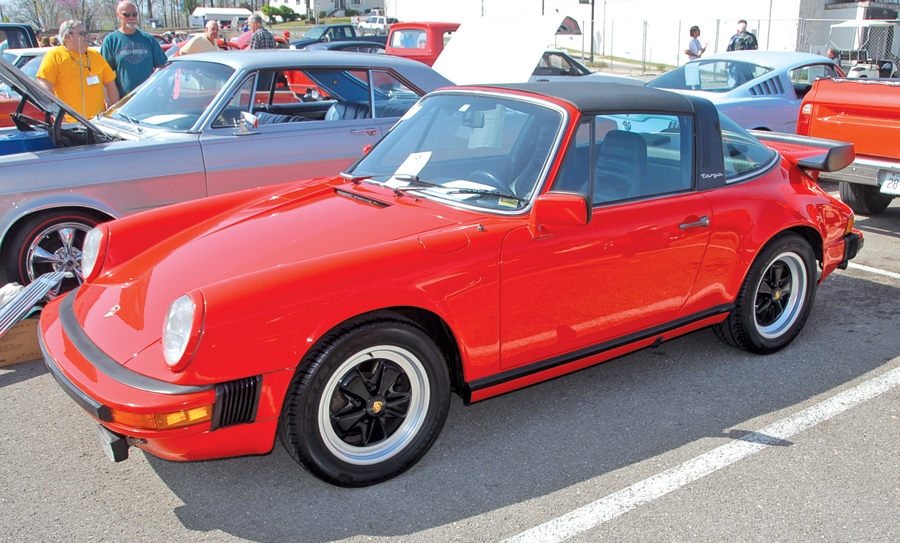
There’s nothing more fun than buying, driving and enjoying a bargain sports car. Today, in our red-hot collector car market, most hope — and perhaps pray — that our purchases will continue to appreciate. Yet the prospect of price appreciation someday is different than a bargain today. The 911SC is that rarity which represents a great value in today’s market.
The 911SC saved Porsche from a botched response to U.S. emission controls imposed in 1974. Intended to be the rear-engine swan song, the 911SC instead proved to be a tremendously enjoyable and durable design. Long the everyday car of choice for many Porsche enthusiasts, the 911SC is well built, reliable, inexpensive to run, and just plain fun to drive.
By 1978, the entire body and chassis were galvanized — except the bolt-on front fenders, which were added in 1981. Everyday rust that plagued Porsches from time immemorial doesn’t exist for the 911SC. Although rust-proofing started in 1976, the 1976–77 cars have engine weaknesses — relating to emission controls — making them far less desirable than the 911SC.
Maintenance for the long, fun haul
Thirty years on, the 911SC engine has three areas of concern.
First, most owners upgrade to “Carrera” oil-fed cam-chain tensioners, costing around $2,500 for parts and labor.
Next, the fuel-injection airbox can break with a backfire on start-up, so a special “pop-off” valve solves the problem at about $250 installed.
Finally, head studs can fail after 30 years or so. When they do, you’ll hear a distinct “popping” on hard acceleration. Plan on $4,000 to do all 24, and you’ll be ready for another three decades of motoring pleasure.
Transmissions are strong and long lasting — if shifted with a slight pause between gears. You can always tell a know-nothing Porsche pilot as he smashes gears from one to the next with a single, swift, sharp motion. If the 911SC you are looking at shifts hard or grinds between shifts, the sturdy 915 gearbox can be rebuilt to work like new for about $3,500. Used properly, the gearbox will last another 30 years — or more.
Steer away from racer “upgrades”
For the most part, “upgrades” are downgrades if you want a reliable, fun, durable car for the street. Most add-ons you see in Porsche magazines were developed for track use. Few help when driving a car on the street, and many trigger big trade-offs you probably won’t like.
The biggest mistake I see people make is to go for the “Sports Suspension.” Gosh, that has such a nice ring to it, doesn’t it? I’m a good sport, I bet I’d like a sports suspension. I mean really, who wouldn’t?
The answer is almost no one. Sure, if you want your 911SC to ride like a dump truck, by all means, be my guest. Although it will handle better at 120 mph that way, my problem is, on the street, I don’t often drive that fast. Or ever.
Every part of every car is a compromise. Porsche carefully selected a balance between track-style handling and ride comfort at normal road speeds. Stick with stock torsion bars and shocks to enjoy the suspension as originally engineered. Now, you can do anything you want; it’s okay with me. But don’t tell me it’s an upgrade.
Wheels are another part of Porsche’s carefully selected suspension. For the best street ride, go with the standard-fitment 15-inch ATS “Cookie Cutters” in six-inch and seven-inch widths. If you want a firmer ride and better high-speed handling, select the 16-inch Fuchs forged alloys that came with most 911SCs delivered in the United States. Stick with the six-inch and seven-inch widths. If you go bigger or wider, ride quality will quickly deteriorate.
Stay original and watch it soar
911SC prices remained constant from the mid-1980s for about two decades at $15k–$20k for a nice one. From Europe, in 2007–09, came the demand for original-paint, low-mile SCs (30k–50k miles) that would bring $40k or more. This price level hasn’t caught on in the U.S., but in general, prices are firming, and nice SCs can easily bring prices in the mid-$20k range — or more. Coupes, cabriolets and Targas trade at about the same money, even though SC cabs are quite rare.
You’ll want an original interior and paint color, as well as stock body parts and drivetrain. Go-fast geegaws, such as turbo whale-tail spoilers, slant-nose fenders, and monster rear flares do not add value, nor do maximus mondo engines.
First 356 (1949–65) prices went stratospheric, now early 911s (1965–73) have followed, in some cases topping 356s. With the 1974–77 cars being less desirable, the next great Porsche to ascend as demand builds for vintage machines is the 1978–83 911SC.
Long recommended by marque experts as an ideal car to own, no other Porsche, new or old, provides a better balance between ease of ownership and pure pleasure. Or as good a value. ♦